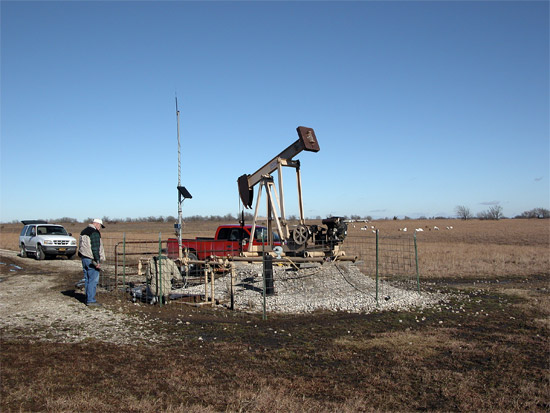Coalbed Methane

Coalbed methane is natural gas that occurs with coal deposits because methane is generated by the same geological process that turns plant material into coal. Because of mining disasters caused by the highly explosive coalbed methane, the mining industry began ventilating mines to remove the gas and release it into the atmosphere. In the early 1980s, a new industry was born when mining companies started capturing and selling the methane.
Coal was mined in Kansas for more than 160 years, mostly in southeastern Kansas, but relatively little coalbed methane was produced in the state before 2000. Coalbed methane production in southeastern Kansas began rising dramatically in 2001 then peaked in 2008 when natural gas prices fell and coalbed methane exploration and production became less profitable. In Kansas, it is produced from subsurface layers of coal, or coalbeds, rather than active coal mines.
Coalbed gas is mainly composed of methane (CH4), the principal constituent of natural gas. Geologists call it a sweet gas because it typically contains very few of the impurities—hydrogen sulfide, nitrogen, or carbon dioxide—normally found in natural gas. When burned, coalbed methane generates as much heat as petroleum-based natural gas.
KGS Public Information Circular 19, Natural Gas from Coal in Eastern Kansas, provides information about the production and potential of coalbed methane in Kansas.